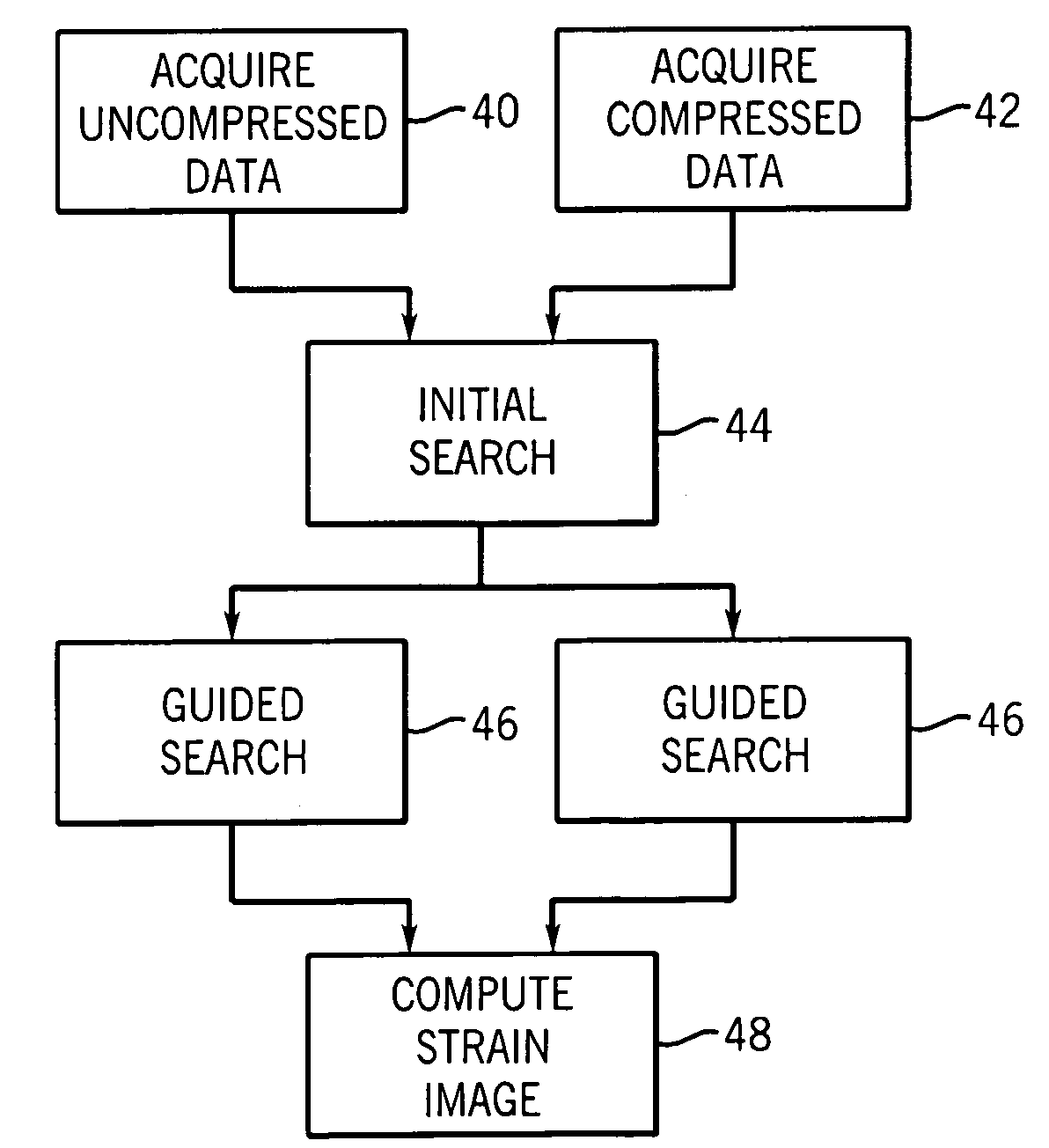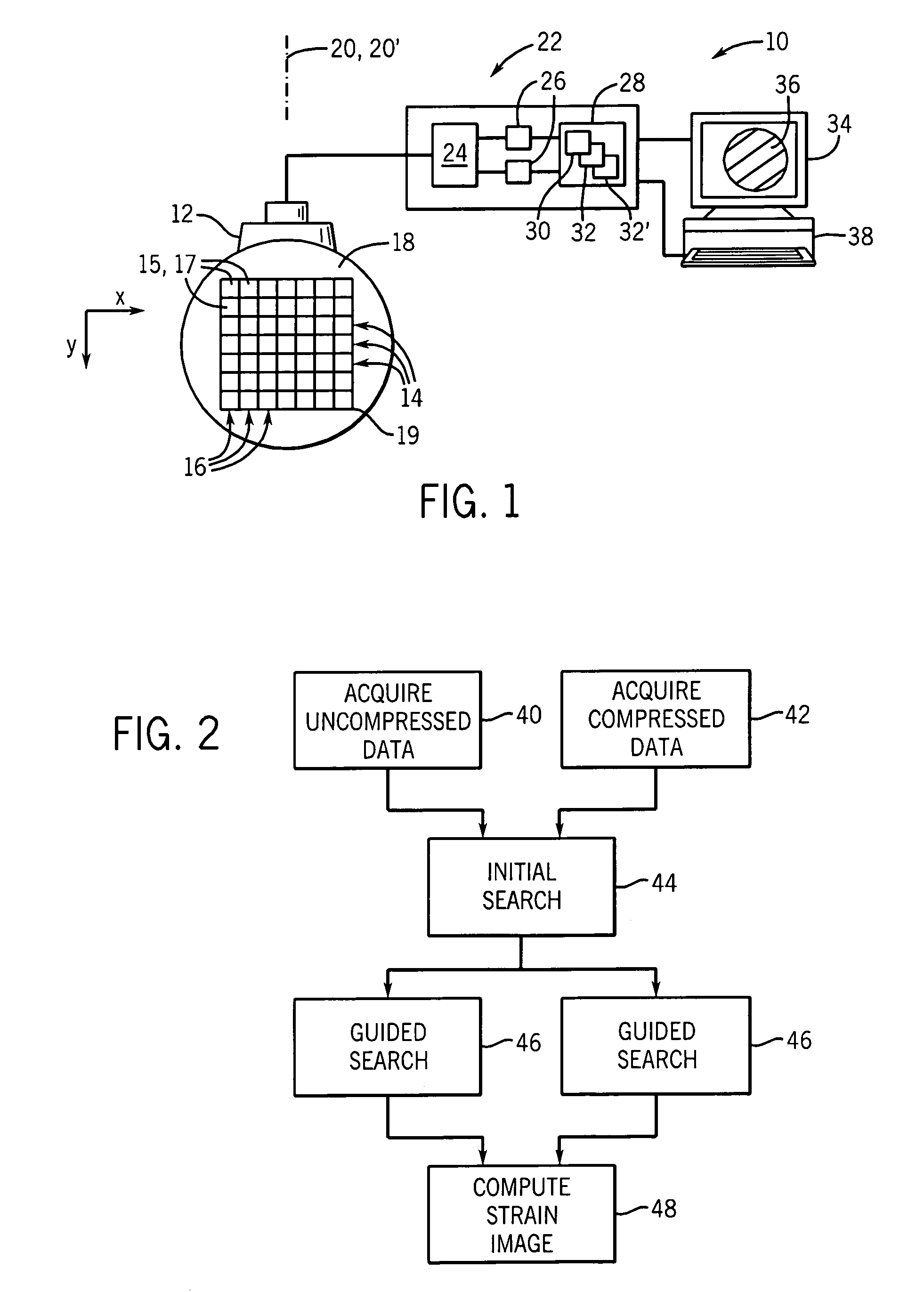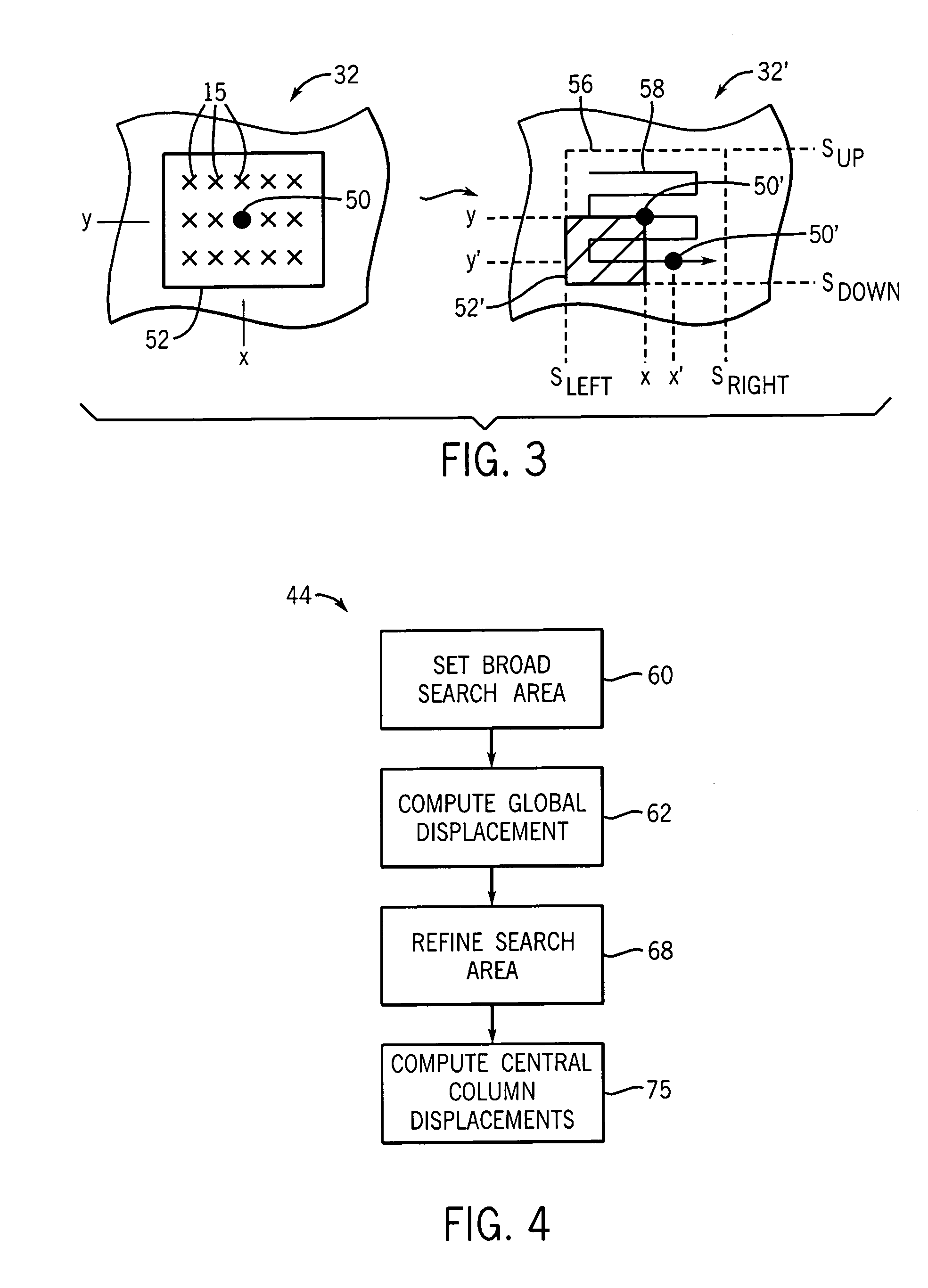Ultrasonic strain imaging device and method providing parallel displacement processing
a technology of strain imaging and parallel displacement processing, applied in the field of ultrasonic imaging, can solve the problems of limiting the necessary area of the search window, reducing the chance of possible false matches, and managing the computational burden of matching points with each other
- Summary
- Abstract
- Description
- Claims
- Application Information
AI Technical Summary
Benefits of technology
Problems solved by technology
Method used
Image
Examples
Embodiment Construction
[0051]Referring now to FIG. 1, an elasticity imaging machine 10 of the present invention includes an ultrasonic array transducer 12 that may transmit and receive ultrasonic signals along a propagation axis 20 to acquire ultrasonic echo data points 15 at corresponding volume elements 17 throughout a region of interest 19 in the tissue of an object 18.
[0052]The echo data points 15 and the volume elements 17 may be identified by logical rows 14 and columns 16, wherein the rows 14 are generally lines of echo data points 15 or volume elements 17 extending perpendicularly to the propagation axis 20, and the columns 16 are generally lines of echo data points 15 or volume elements 17 extending parallel to the propagation axis 20. These terms should be understood generally to describe data acquired through a variety of ultrasonic acquisition geometries including those which provide for fan beams of ultrasound and the like, and therefore not be limited to strictly rectilinear rows and columns...
PUM
 Login to View More
Login to View More Abstract
Description
Claims
Application Information
 Login to View More
Login to View More - R&D
- Intellectual Property
- Life Sciences
- Materials
- Tech Scout
- Unparalleled Data Quality
- Higher Quality Content
- 60% Fewer Hallucinations
Browse by: Latest US Patents, China's latest patents, Technical Efficacy Thesaurus, Application Domain, Technology Topic, Popular Technical Reports.
© 2025 PatSnap. All rights reserved.Legal|Privacy policy|Modern Slavery Act Transparency Statement|Sitemap|About US| Contact US: help@patsnap.com



